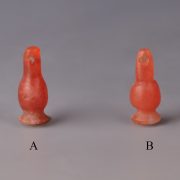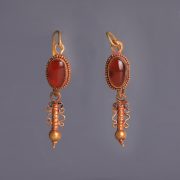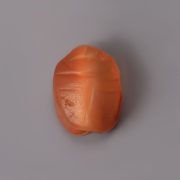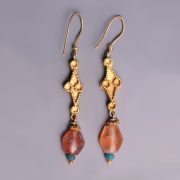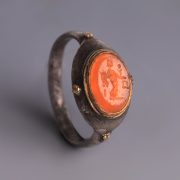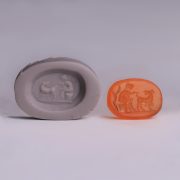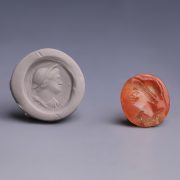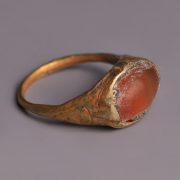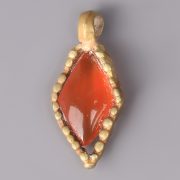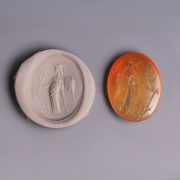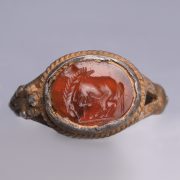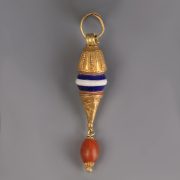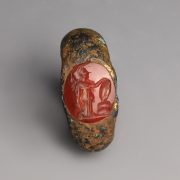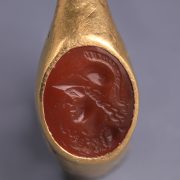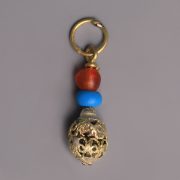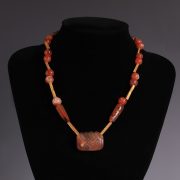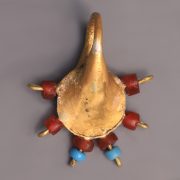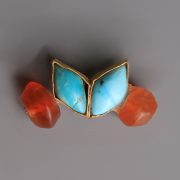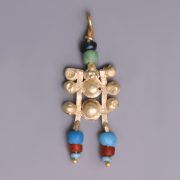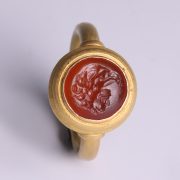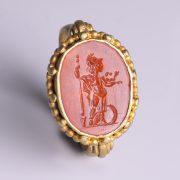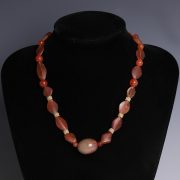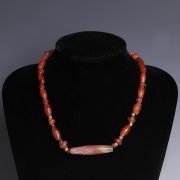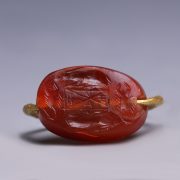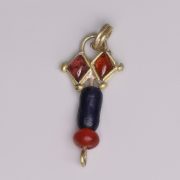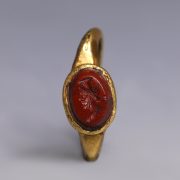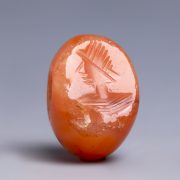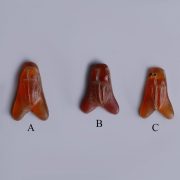Carnelian
A transparent variety of chalcedony ranging from red-brown or orange to a barley red-tinged transparency. The name Carnelian derives from the latin word carneus meaning fleshy. In Ancient Egypt its main use from Predynastic times until the end of Dynastic history was in the production of beads and amulets, later finger-rings and ear ornaments, and as inlay. Ancient Egyptian royal jewellery often used a combination of three semi-precious stones – carnelian, turquoise and lapis lazuli – to form a red/green/blue design. Carnelian, being more widely available than the other two rarer stones, appeared to be used in ancient artefacts to signify Re (the sun), and other powers or forces. It depicted the (angry) Eye of Horus, Sekmet the Lion Goddess, and was used to create the “sun-disks” we see throughout Ancient Egyptian art.
Roman and Egyptian culture used the carnelian gemstone to make signet rings, used to stamp a seal into wax. The term signet ring is still used today in modern jewellery.
Showing all 28 results
- View product
- View product
- View product
- View product
- View product
- View product
- View product
- View product
- View product
- View product
- View product
- View product
- View product
- View product
- View product
- View product
- View product
- View product
- View product
- View product
- View product
- View product
- View product
- View product
- View product
- View product
- View product
- View product
By continuing to use the site, you agree to the use of cookies. more information
The cookie settings on this website are set to "allow cookies" to give you the best browsing experience possible. If you continue to use this website without changing your cookie settings or you click "Accept" below then you are consenting to this.
